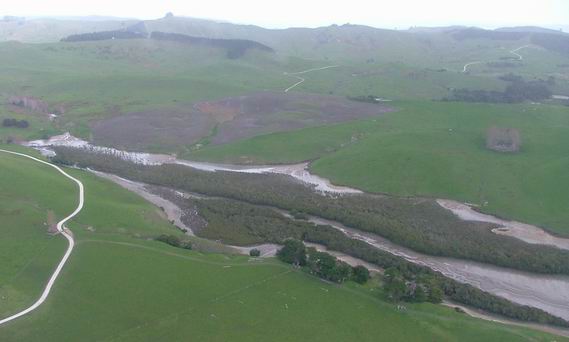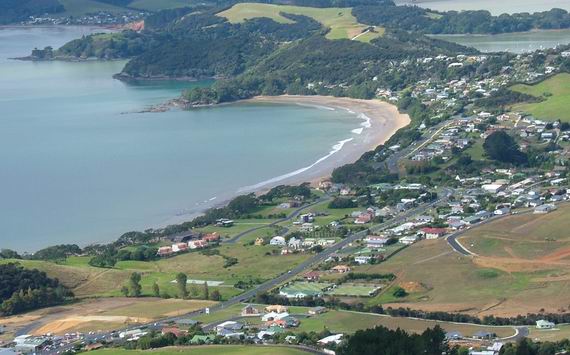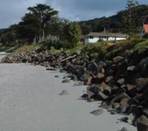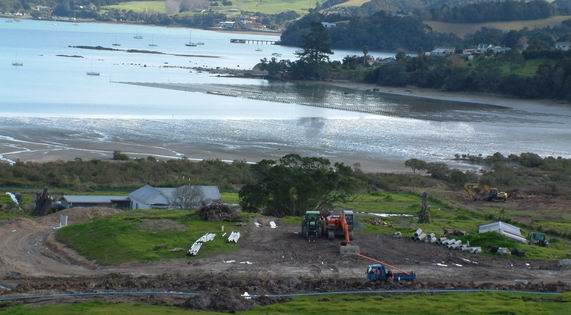6.2 What are the pressures on the coastal environment?
Demand for coastal residential property, water space and recreational activities have increased the many pressures on the coastal environment. The key pressures on Northland's coastline currently are catchment land use, coastal development and use of coastal water space including coastal structures.
Land use
This includes the modification of natural coastal systems and features, such as sand dunes and coastal wetlands, through development, forestry, farming, stock grazing, flood control schemes and drainage, vehicle usage and introduced pest species.
Sedimentation and nutrient enrichment inputs from surrounding land use and river outflows is leading to mangrove proliferation and an associated change in broad-scale habitat composition in Northland's estuaries.
The photograph below shows an example of a modified coastal margin, where coastal forest has been converted to pastoral farming and stock grazing has removed most riparian vegetation.

Example of a modified coastal margin in the Kaipara Harbour.
Coastal development and use
The cumulative effects of coastal development and use can have a significant detrimental effect on the natural character of the coast if poorly designed, implemented or maintained. This includes coastal subdivisions, marine farming, mooring areas, marinas and other coastal structures
The number of coastal subdivisions has increased significantly in recent years. More information on this is presented below in the state of the coastal environment.

Subdivision development sprawling along the Coopers Beach and Doubtless Bay coastline.
 Coastal subdivisions have sometimes been built in active erosion and storm hazard zones which, along with fears of climate change increasing the risk of more storm damage, is bringing an increased demand for coastal protection works.
Coastal subdivisions have sometimes been built in active erosion and storm hazard zones which, along with fears of climate change increasing the risk of more storm damage, is bringing an increased demand for coastal protection works.
The photograph to the right is an example of coastal protection works (seawall) resulting from coastal development in a hazard zone at Rangiputa.
More detailed information on coastal protection work is presented in Case Study 1: Coast care of dune systems.
Use of coastal water space
The coastal marine area is a public resource, and the public expectation is that the ‘right' of access is maintained.
Of particular concern is the proliferation of coastal structures, such as jetties and boatramps, and their effect on coastal landscape values. There is also an increase in water craft use in Northland and with this an increasing demand for moorings and marinas and associated shore-based facilities including boat ramps, rubbish disposal and car parking.
Other pressures include current and future demands for use of coastal space for energy generation, aquaculture and other industry-related activities, and the effects of associated structures and activities on natural character.
The photograph below shows the cumulative effects of coastal development and use, with a subdivision in the foreground and marine farming, moorings, coastal structures and the site for a proposed marina development in the background.

Cumulative effects of coastal development and use at Parua Bay, Whangarei Harbour.
